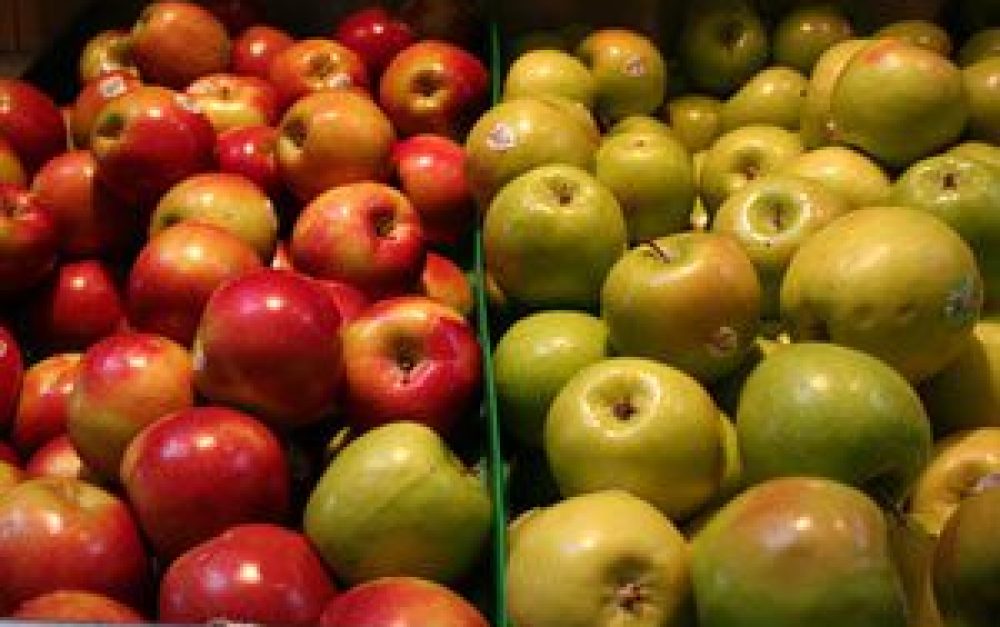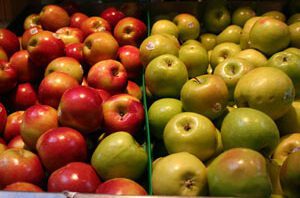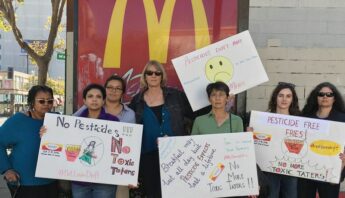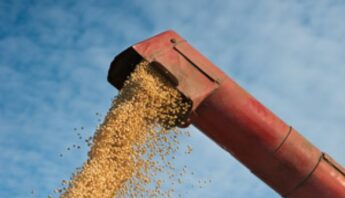Apples and celery this week. Cilantro a couple back. Stories about pesticide residues on food are making the rounds again. After my umpteenth media call, a blog seemed in order.
As I told the LA Times, here's my basic response: "It’s the farmers, farmworkers and residents of rural communities who are really most at risk" from pesticides, not consumers. While these folks are exposed to pesticides from food like the rest of us, they also must contend with pesticide fumes drifting out of fields, exposure from working directly with pesticides, and pesticide-coated dust and dirt tracked into their homes from the fields. Tom Philpott, newly migrated to MotherJones, nails this topic.
None of this is to discount the accumulating evidence around low-level (possibly dietary) pesticide exposures being linked to ADHD and other cognitive deficits in kids, rural and urban. A constant, low-level pesticide cocktail in our food cannot be good — especially for pregnant women, young children, the sick or the elderly.
And our own WhatsOnMyFood.org website and iPhone App are designed to give people better insight into which types of residues are in their food and water. Because people want to know. Using a portion of the same data (we also pull and cross-reference toxicity data), the Environmental Working Group just released their updated wallet card with their Dirty Dozen and Clean Fifteen lists of most and least contaminated produce items. All well and good.
But while from an eater's viewpoint the Clean Fifteen fruits and veggies really are a lot cleaner than the Dirty Dozen, from the perspective of farmers, farmworkers, and rural residents, there's not much difference.
Back to the farm
So, with these caveats in place, I invite readers to consider the following analysis — tracking the residue issue from fork all the way back to the farm:
I looked up the total amount of pesticides applied in California in 2009 to each of the Dirty Dozen and Clean Fifteen items and also the total number of acres planted for each, and calculated pesticide use intensity for each. (I used California data since its the only data available, and since pineapples, mangoes, and blueberries aren't grown in California I had to omit these). Here's what I found:
- The cleanest crop from a producer's standpoint is actually spinach, with only 0.4 lbs of pesticide used per acre in California. Spinach is fifth on the Dirty Dozen list.
- Conversely, the crops with most intensive pesticide use are sweet potatoes and mushrooms, with 110.3 lbs/acre and 106.1 lbs/acre, respectively. These are Clean Fifteen commodities.
- Overall, the two lists don't look that different from the standpoint of pesticide use. The average pesticide use intensity for the list are quite similar: 26.2 lbs/acre for the Clean Fifteen and 29.8 lbs/acre for the Diry Dozen.
So what's going on? Fumigation is major piece of the puzzle.
As I wrote last week, fumigants are just plain dangerous. They are very drift-prone and very toxic, and they are applied at very high rates compared to non-fumigant pesticides. But because they are applied to soil before crops are planted, and because they are so volatile and so reactive, they don't stick around on growing plants and they don't end up contaminating the food you buy at the market.
Another factor is how we prepare food: no one eats onion skins, corn husks, the outsides of pineapples, avocado shells, or watermelon rinds, and not surprisingly these items are on the Clean Fifteen list. USDA washes and prepares all the foods as we would before testing. Meanwhile, all the fruits and vegetables on the Dirty Dozen list are things we tend to eat whole — skin and all — so any pesticides not washed off will go right down the hatch.
My point is two-fold. 1) The scandal isn't cilantro, or apples. It's 2 million people doing the third most dangerous job in the country for sub-poverty wages, while facing pesticide exposure. 2) We can't shop our way out of this: pesticides are a public policy issue.
Take action » Join concerned Californians who are fighting to keep the potent neurotoxin and carcinogen methyl iodide out of the state's strawberry fields. And yes, strawberries are consistenly among the Dirty Dozen, but not because of methyl iodide.







